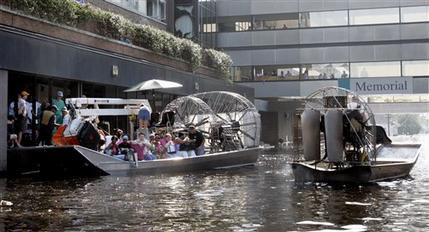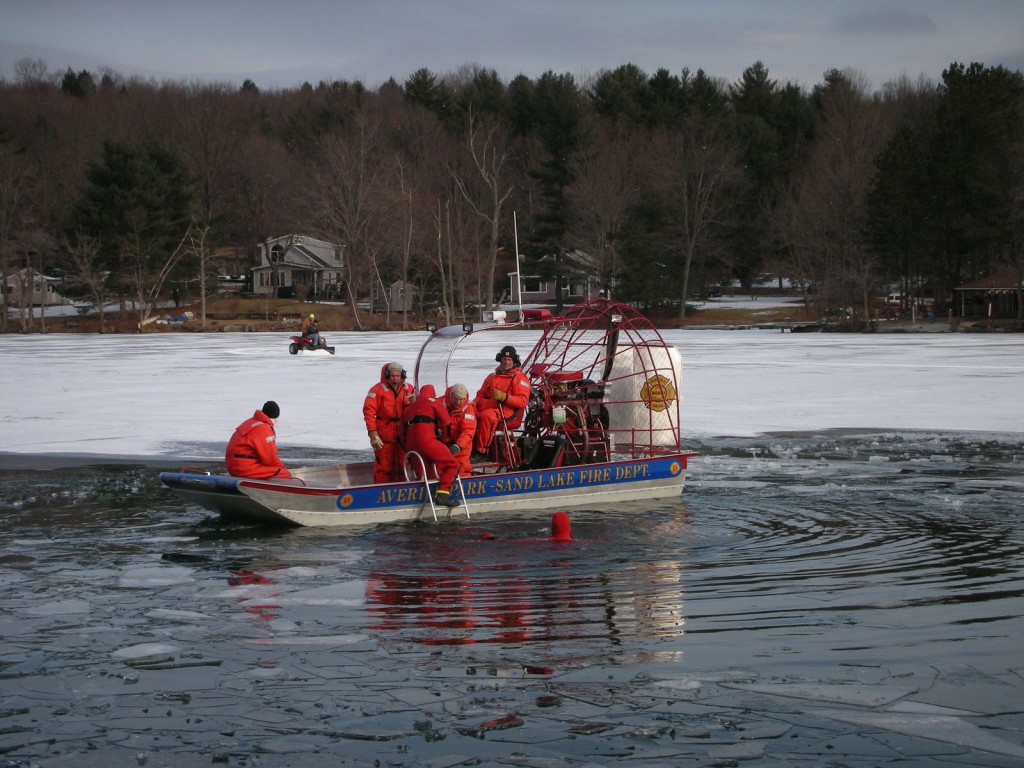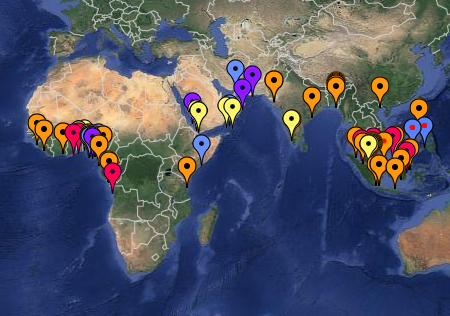search & rescue
Use in emergency operations
Airboats have a flat bottom hull design and no working parts below the waterline. They can be operated in floodwaters without regard to depth or floating debris. Loaded to capacity, an airboat can maneuver through floodwaters, skim over downed trees, submerged fences, wrecked automobiles, trash and vegetation. Although airboats have their limitations, they have been reported to operate in up to class 4 whitewater.
Its unique features make it the nearly perfect vessel for flood rescue and evacuation. An airboat can be deployed without regard to a designated launch site or depth of water. An adequately powered airboat needs no water at all for operation. It can be unloaded from its trailer onto dry ground by its captain alone, without any additional help, and can even be maneuvered across dry pavement to the water’s edge.
An aluminium airboat’s construction, coupled with a polymer hull covering, allows it to withstand the otherwise destructive punishment by ice shoves, rocks, logs and tree stumps. An airboat with a polymer-clad aluminium hull can withstand the destructive pounding of jagged rocks that would quickly destroy the vinyl skirts of a hovercraft or inflatable.
Deployment: Launching – No water necessary
An advantage of using airboats for water or ice-rescue operations is that no designated launch site is needed. An airboat’s design makes it capable of being launched almost anywhere, regardless of the presence of water or a wet surface. An airboat, equipped with an adequate power plant and a polymer clad bottom, is capable of running on dry ground, even with a full payload.
When being deployed for emergency operations, an airboat can be run directly off its trailer, across dry ground, mud, ice or snow, down an embankment and onto the body of water or ice with minimal launch time. This capability makes launching a one-man operation.
Comparing vessels in length, width and carrying capacity, airboats have a much greater payload than hovercraft or inflatables, while still maintaining the ability to traverse shallow water or ice.
A 16-18 foot (4.9 – 5.5 m) aluminium hull airboat, powered by a large block automotive engine, can have a 2,200–2,800 pound (998 – 1270 kg) load capacity and carry up to 12 people. The same size airboat, specifically designed for search and rescue operation, can accommodate up to four immobilized patients on backboards or in stokes baskets, in addition to the crew and rescue equipment.
Unloaded and under ideal operating conditions, an airboat can travel up to 45-60 mph (72 – 97 km/h) across water. Carrying a full load, an airboat can be maneuvered over sandbars, dense aquatic vegetation, across mud flats, dry ground and even climb hills.
Hurricane Katrina
Aerial View of New Orleans after Hurricane Katrina. Airboats were the best option to search for survivors and evacuate victims.
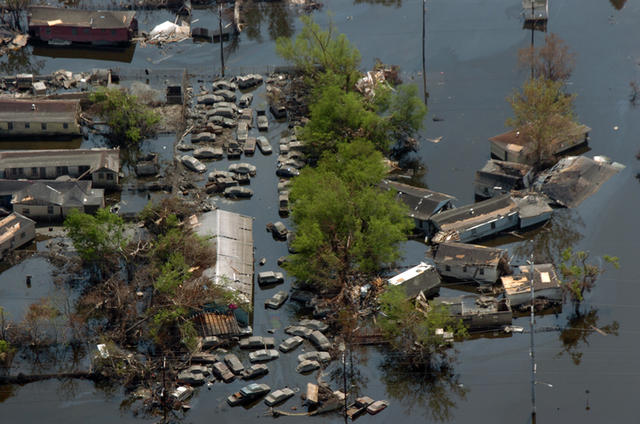
Aerial view of flood waters covering a roadway in New Orleans where people are launching rescue boats. New Orleans is being evacuated as a result of floods caused by hurricane Katrina. photo: DoD
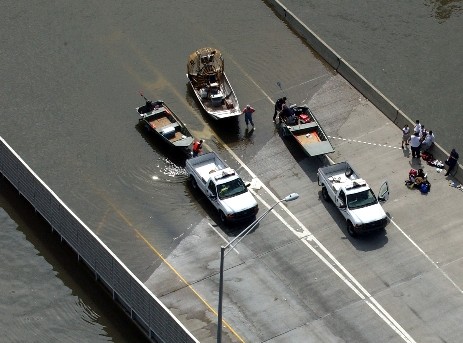
Members of the FEMA Urban Search and Rescue (US&R) task forces from Missouri and Florida continue operations by airboat into areas flooded by Hurricane Katrina. photo: Jocelyn Augustino/FEMA
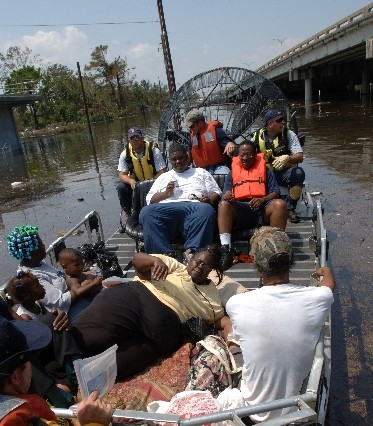
An airboat pulls up to the Memorial Medical Center in New Orleans on Wednesday, Aug. 31, 2005. Floodwaters continued to rise in the Crescent City after several levees broke, inundating the city in the wake of Hurricane Katrina. photo: Jocelyn Augustino/FEMA
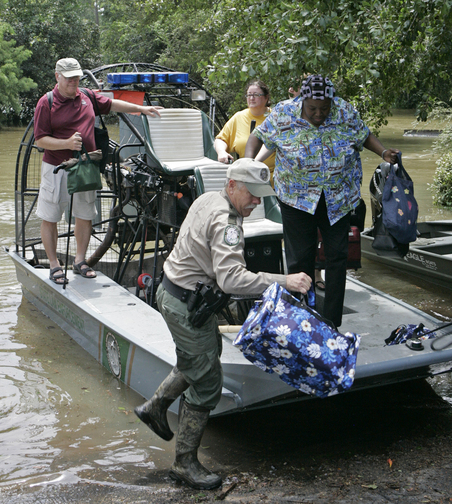
Algussie Thompson is helped ashore by Fish and Wildlife officer Charles Higman after Tropical Storm Fay flooded her Timber Lake neighborhood on Sunday, Aug. 24, 2008 in Tallahassee, Fla. photo: AP/Steve Cannon
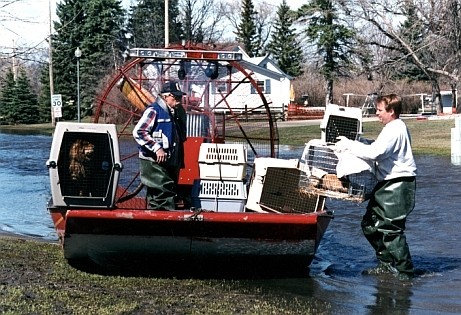
East Grand Forks MN, April, 1997 -- Humane Society of the United States volunteers wade through flood waters to rescue stranded pets. photo: David Saville/FEMA
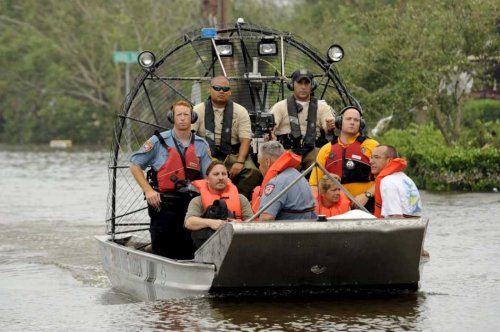
Rescue workers in an airboat evacuate local citizens from their flooded homes in the bayfront area of Galveston, Texas, USA, 13 September, 2008 following the landfall of Hurricane Ike. Galveston took a direct hit from Ike, which caused extensive flooding in the area. photo: EPA/Bob Pearson
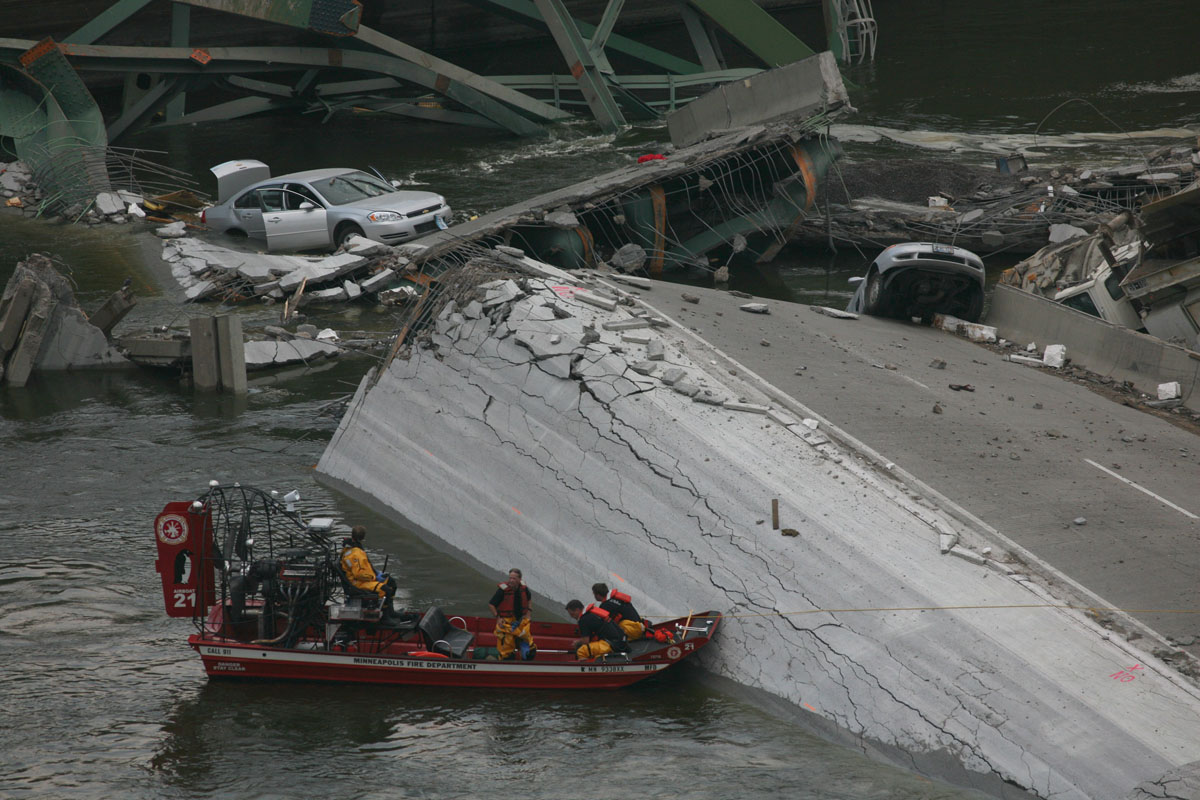
Rescue operations in Minneapolis, MN after the I-35W bridge over the Mississippi collapsed during rush hour on August 1, 2007
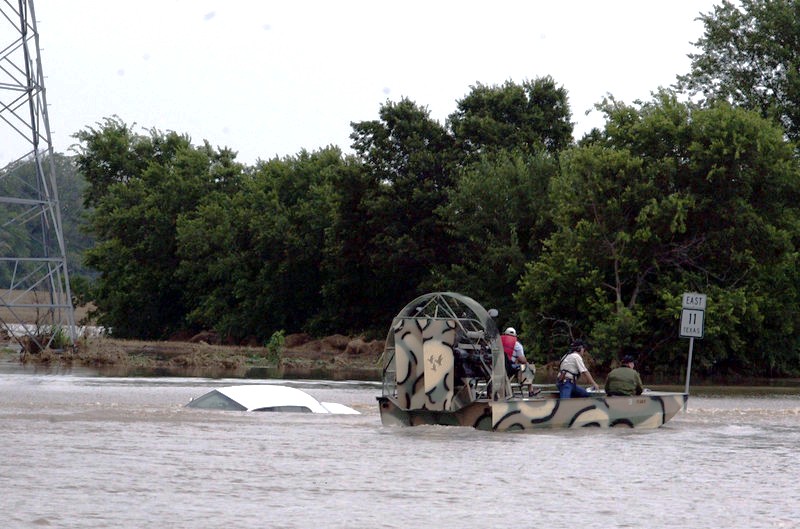
An airboat searches a car that was swept off State Highway 11 in Sherman, Texas photo: Chris Jennings / Herald Democrat
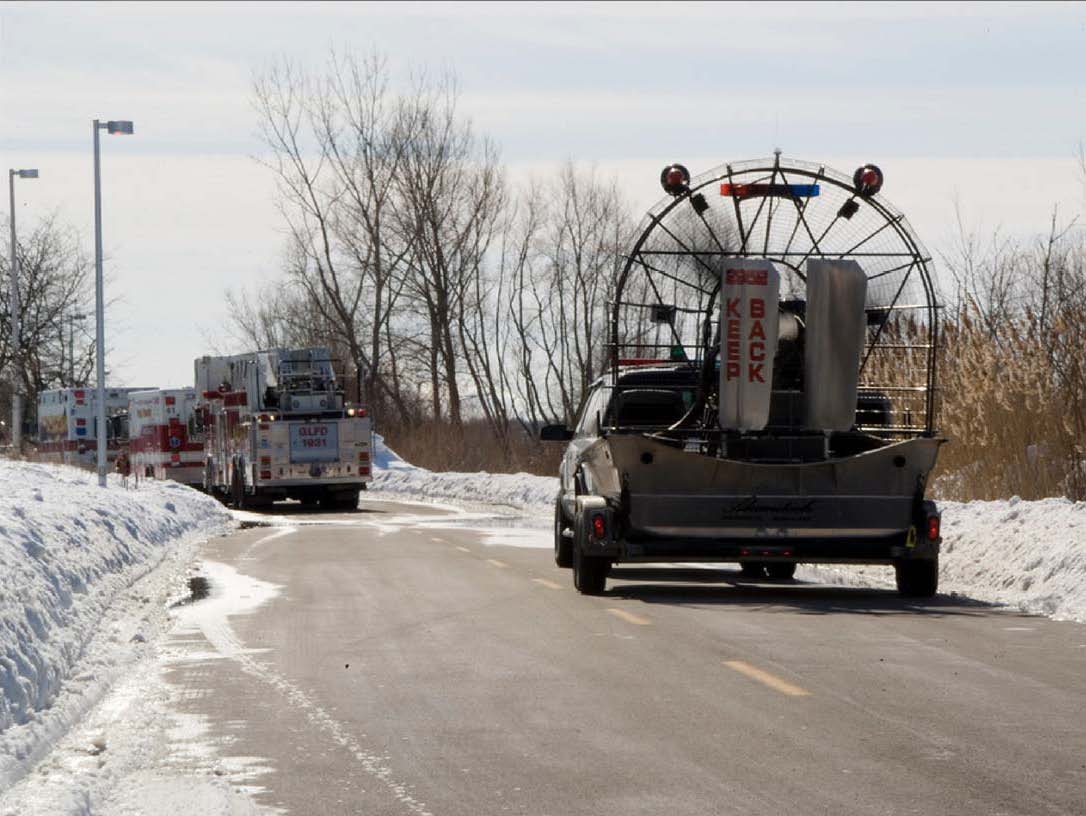
An airboat is being towed behind fire trucks on their way to North Point Marina in Winthrop Harbor, Illinois. Situated due north of Chicago on Lake Michigan, it is the largest marina on the Great Lakes. A fire at broke out at 08h30 am on February 15th, 2008 at Skipper Bud's Boat Sales Warehouse.

